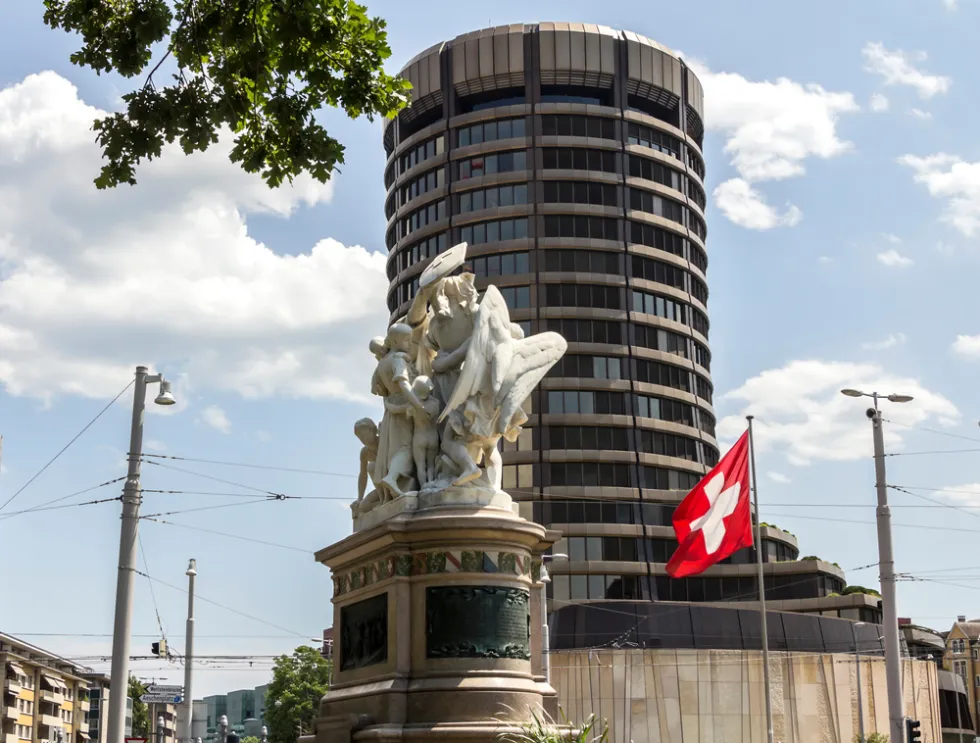Big US banks lobbying against the Federal Reserve over proposals to increase their capital buffers are getting creative. For instance, as the Buffalo Bills battled the Cincinnati Bengals at Cincinnati’s Paycor Stadium last November, television ads from a bank trade group criticized the proposals as unnecessary and harmful for working families and small businesses.
“It’s the kind of thing you never expect from such an industry that’s often closely aligned with its regulators and that isn’t inclined to make such a big deal out of some regulatory initiative,” David Zaring, Wharton professor of legal studies and business ethics, said recently on the Wharton Business Daily radio show that airs on SiriusXM. Also unusually, the proposed rules have drawn opposition from both sides of the political aisle.
“Basel III Endgame” is the name of the final round of capital adequacy proposals from the Bank for International Settlements in Switzerland, which is owned by member central banks and acts as their banker. The latest rules are part of a series aimed at keeping the banking industry safer after the 2008 global financial crisis and the March 2023 regional banking crisis set off by the collapse of Silicon Valley Bank (SVB) and First Republic Bank.
The proposed rules will require large US banks (those with $100 billion or more in total assets) to increase their capital by an aggregate 16%, varying across banks based on their activities and risk profiles. “Most banks currently would have enough capital to meet the proposed requirements,” the Federal Reserve said when it unveiled the proposals last July. The new rules will also standardize the capital framework related to credit risk, market risk, operational risk and financial derivative risk. Banks would have a window between July 2025 and July 2028 to comply with the new framework.
So why the pushback from banks?
The affected banks do not see a need for that extra capital. The Bank Policy Institute is running a campaign called “Stop Basel Endgame.” It says the rules would limit banks’ capacity for mortgages, car loans, credit cards and small-business loans.
“Ironically, a proposal meant to mitigate risk will actually increase risk,” JPMorgan Chase chair and CEO Jamie Dimon argued in a congressional testimony. He said Basel III Endgame will increase borrowing costs for governments and businesses and that “regulators will be unable to see the next crisis brewing.” CEOs of other big banks echoed those sentiments in their testimonies.
Zaring pointed to some aspects of the proposals that could misfire. “While the overall goal is to make the largest US banks safe and sound, there’s some concern that the way it’s being implemented will impose such stringent requirements on these large banks that they’ll have a hard time lending in certain areas that we are accustomed to seeing them lend in,” he said.
Zaring pointed out, for instance, that the new rules will bring constraints on residential mortgage lending. “That makes it a little bit likely that banks will continue to exit from the residential mortgage space, and nonbanks will be the companies underwriting most of the home mortgages in the US,” as has been the case since 2016. In fact, bank lending to the real estate industry could contract in the fallout from the regional banking crisis, as Wharton professor of real estate and finance Susan M. Wachter warned soon after that crisis broke out last year.
The story on either side
Zaring described how banks and central banks might argue over the proposals.
“The big banks will tell you that the US banking industry has never been safer,” he said. “They came through the COVID disruptions to the economy with flying colors. They haven’t had problems dealing with inflation in the way that midsize banks have, and they haven’t been troubled by [the March 2023] mini-banking crisis. If anything, many of those people who left First Republic and SVB went to JPMorgan Chase, our largest American bank. So, the big banks have a story that is, ‘We’re doing great. What on Earth are you doing imposing these onerous new capital requirements on us when we’ve already established that we can make it through lots of different crises?’”
In a rebuttal to those claims by the large banks, the regulators would point to the bailouts of SVB and First Republic Bank at taxpayer expense, Zaring noted. “The regulatory story is, ‘Maybe the largest banks are doing okay, but we have a banking sector that can run into problems, and it can cost the [Federal Deposit Insurance Corporation] money. And so, we need to tweak capital requirements to be ready for that.’”
Another sore point with Basel III Endgame is its effort to standardize the capital framework related to different types of risks such as credit risk and operational risk. Managing risk at banks often involves a tradeoff, Zaring said. Regulators could either require banks to set aside more capital buffers against potential risks, or they could more closely monitor how banks manage their risks, he explained. “Basel III Endgame doesn’t ignore risk management, but it focuses on making capital really high so that banks make their own choices and if those choices go badly, they will make it through.”
[Knowledge at Wharton first published this piece.]
The views expressed in this article are the author’s own and do not necessarily reflect Fair Observer’s editorial policy.
Support Fair Observer
We rely on your support for our independence, diversity and quality.
For more than 10 years, Fair Observer has been free, fair and independent. No billionaire owns us, no advertisers control us. We are a reader-supported nonprofit. Unlike many other publications, we keep our content free for readers regardless of where they live or whether they can afford to pay. We have no paywalls and no ads.
In the post-truth era of fake news, echo chambers and filter bubbles, we publish a plurality of perspectives from around the world. Anyone can publish with us, but everyone goes through a rigorous editorial process. So, you get fact-checked, well-reasoned content instead of noise.
We publish 2,500+ voices from 90+ countries. We also conduct education and training programs
on subjects ranging from digital media and journalism to writing and critical thinking. This
doesn’t come cheap. Servers, editors, trainers and web developers cost
money.
Please consider supporting us on a regular basis as a recurring donor or a
sustaining member.
Will you support FO’s journalism?
We rely on your support for our independence, diversity and quality.








Comment